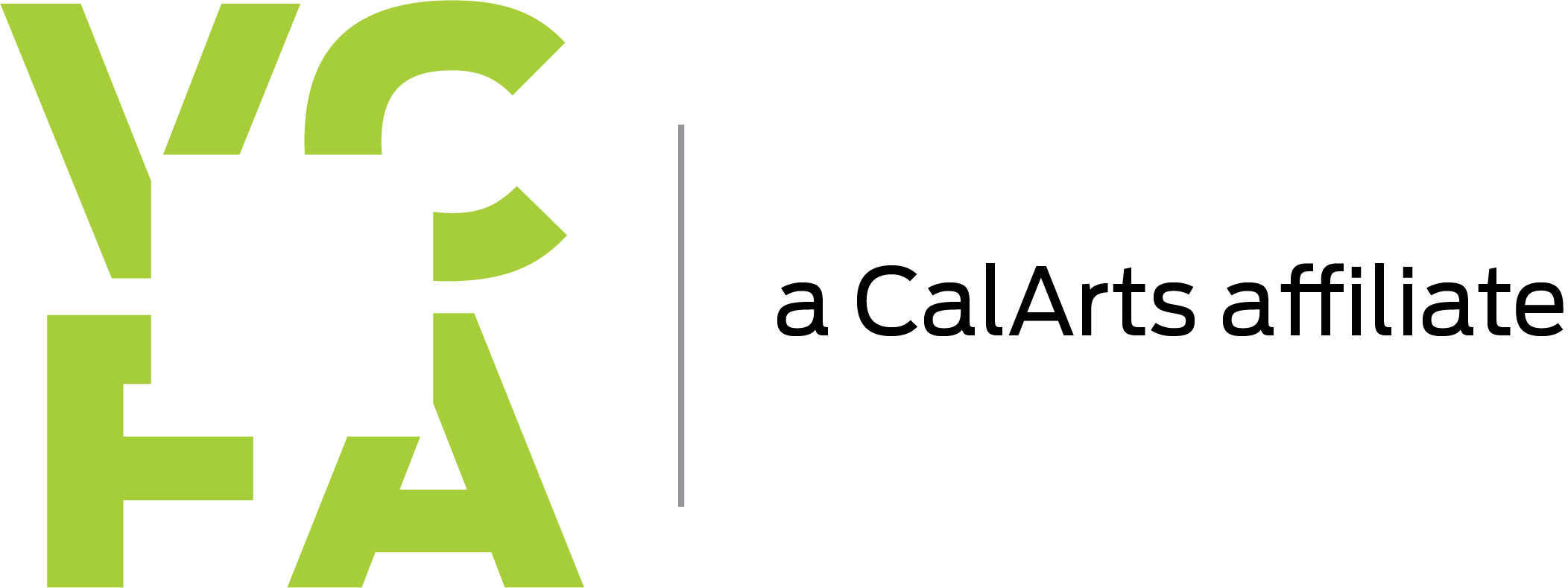7 Tips for How to Write a Picture Book
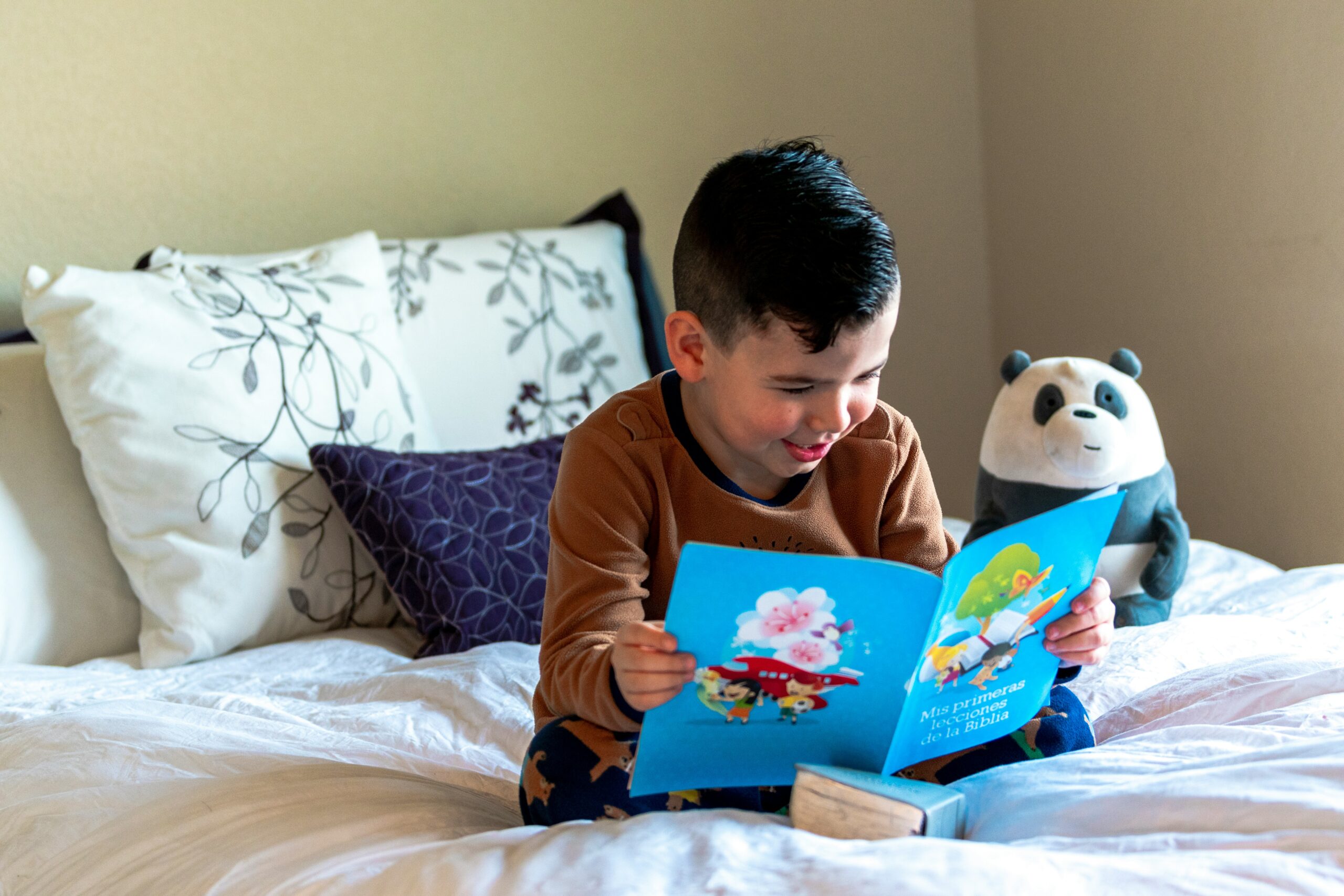
How do you write a picture book that young readers fall in love with? There’s no easy answer, but it starts with reading as many picture books as you can.
By Christine Hartman Derr
May 26th, 2025
Picture books are some of the first books to take root in our child-reader hearts. It makes sense that we’re drawn to them as writers—especially if we’re wanting to give young readers the same gift we received: the kind of book that gets taken everywhere, a treasure with creased pages, crumbs in the spine, visible fingerprints.
In other words, a book that can handle a lot of loving.
But how do we write such a book?
There are as many approaches for writing a picture book as there are writers. The following tips are methods that have personally helped me during my picture book writing journey. They may not work for you—that’s okay!
Think of writing a picture book as a spaghetti situation: throw it at the wall and see what sticks, and clean up what doesn’t (unless you have a dog, in which case cleanup is (metaphorically) handled for you).
In this article, we’ll discuss:
- Why you can never read enough
- Where specificity matters most
- How poetry can help you write a picture book
- How to refine your beginnings and endings
- Why embracing revision can make all the difference
Read. So much. All the time.
I know, you probably see this advice everywhere. But reading mentor texts—titles that could be comparable titles to your own work that you read to dissect and analyze the craft—not only works as a market analysis, but also to fill your creative well.
VCFA alumnx and author Lyn Miller-Lachmann says, “Each one of the books we read became a mentor text, a guide to our own projects.”
If you’re the kind of person who (like me) may swoon over a particularly well constructed sentence, dive deep and explore why that sentence/character/setting/craft element works so well for you. Examine how you could apply that craft element to your draft in a way that is particular to you.
I find this not only inspires me, but also fills my writerly toolbox with a variety of craft skills I can pull out and utilize any time. If ever I’m feeling stuck, I start by reading.
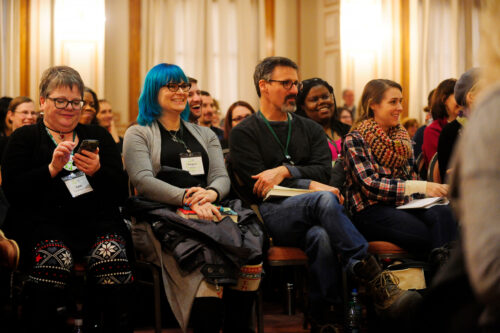
If you want to write a picture book your readers won’t forget, pay careful attention to both your beginning and your ending–and how they related to each other.
Aim for specificity.
A moment in time, a feeling, a place, an experience—narrow in on a precise element of your story instead of reaching for universal appeal.
Honing in allows you to tap into the emotional heartbeat of the story.
Then, you can examine the ways in which that heartbeat is relatable. Whether this is silly (We Don’t Eat Our Classmates) or emotionally resonant (When the Storm Comes), identifying the emotional heartbeat of your story and examining its place within the overall narrative can be a helpful exercise at any point in your writing process.
An example of this is found in When We Gather (Ostadahlisihia): A Cherokee Tribal Feast.
Author Andrea L. Rogers shows a Cherokee girl gathering wild onions and preparing a traditional spring feast with her family members. Readers may not share the experience of gathering wild onions or singing songs in Cherokee. But the emotional heartbeat of the story is continuing cultural lifeways, gathering with loved ones, and creating something together. The specificity of this girl, this family, this tradition invites readers in, rather than excluding them, whether they’ve participated in Cherokee traditions or not.
Experiment with Poetry
My debut picture book began as a poem.
I didn’t know how to write a picture book, but poetry was familiar. As it turns out, a poem can be adapted into a lovely picture book!
Whether you lean into poetry or are just feeling stuck, try beginning with a poem.
On subsequent drafts, step into picture book mode. Deepen character development, layer in details, lean into your favorite poetic devices and lyrical language. Transition line and stanza breaks into page turns.
Thinking about where the page turns helps ease the story from poem to picture book.
Be intentional with each choice—why break here? While discussing page turns, author and agent Tracy Marchini says, “…think of page turns as a “beat” of their own.”
Does turning the page here add to the humor, show movement in time, offer an opportunity for the illustrator to deepen the story through their art? Page turns both invite the reader to pause and urge them to continue on. Where are your page turns leading your reader?
Consider looking at some of your favorite picture books from childhood and some new releases. Examine the specific lens the author utilizes to invite readers in.
Looking for mentor texts? I highly recommend Joy Harjo’s Remember, Vashti Harrison’s Big, and Cynthia Leitich Smith’s Jingle Dancer.
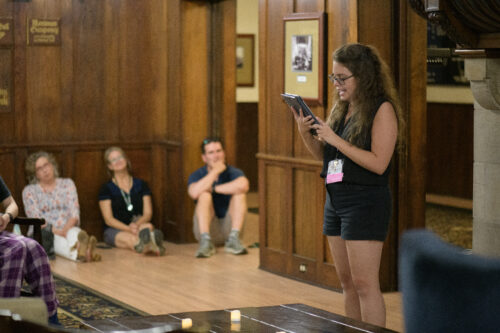
At VCFA, the study of how to write a picture book includes sharing your work and asking peers for feedback.
Refine Your Beginnings & Endings:
Strong beginnings are such a necessity—they set expectations.
But how do you get a strong beginning? It doesn’t always come along in the first draft.
As VCFA WCYA alumnx and picture book author Karen Krossing puts it:
“A strong picture-book beginning needs to cover a lot of ground: introduce an engaging protagonist, define what he or she wants, evoke the setting, launch the conflict, establish tone and voice, and compel a child and even an adult reader to turn the page.”
Just like the beginning, the ending of a picture book needs to be satisfying for both the reader and the listener, as well as for independent readers. As Krossing says, “A picture-book ending is, ideally, a destination that is both inevitable and surprising.” It makes sense with the rest of the story, yet the reader isn’t predicting what will happen next.
Keep in Mind Guidelines
I’m not particularly fond of hard and fast rules. I tend to see them as challenges, and I do love a challenge. However, I try to keep certain guidelines in mind while dreaming up my picture books.
- Length: there are some who believe in distinct rules for picture book length. But for everyone who ascribes to these rules, there are those out there artfully breaking them. Author and literary agent Miranda Paul says “…Rather than sticking too rigidly to word count, it’s best to strive for a manuscript in which the function and the format work together.” She goes on to offer her personal guidelines, and when to break them.
- Accessibility: The age range of your audience often informs how accessible your book is for them. So keep in mind if your target audience is in the preschool to Kindergarten range, the K-2 range, or potentially even higher (typically for non-fiction picture books). Learning about child development can aid in this realm.
Embrace the Necessity of Revising
Oh, revising. Love it, hate it, tolerate it… regardless, once you have a full draft, the next step is revision.
In this step, you can focus on distilling the story to its essence. Especially in picture books, less is often more.
Here are the revisions tips that helped me the most:
-
- Read aloud: read your picture book aloud to check for flow. If you find yourself tripping over certain words or sentences, highlight them for further revision (or if you’re like me, stop and change it in the moment, then remember you’re supposed to be doing a read through, and try again. And again…). After all, picture books are often meant to be read aloud, so checking for read-aloud-ability is key.
- Cut: Befriend your delete key. Examine each and every word—if it doesn’t make your story stronger, consider if it needs to be there. Sometimes we need to write a scene just for ourselves, so we can develop a particular story element, but ultimately that scene slows the pace or feels unnecessary. We can take the emotion or development from that scene and distill it into a detail to layered into a sentence elsewhere.
- Intention versus intuition: While drafting, I tend to lean into intuition in regards to craft and story elements. Revision is the time to evaluate that intuition, see how it integrates into the story at large, and make sure each word, sentence, and choice is intentional, as well.
- Redraft—AKA, how brave are you? If revision isn’t getting your story where you want it to be, consider starting fresh. Minimize the computer window, turn the notebook page—rewrite and see what changes. Warning: if you’re indecisive, you may end up with several completely different picture books, all of which sprouted from one mother draft. Yay, you! Good luck deciding which one to revise next (speaking lovingly, from experience!).
- Feedback: seek out feedback from trusted people in your writerly community. Critique partners, a workshop session, or an advisor can offer insight on the story’s strengths and weaknesses. One of my biggest takeaways from feedback I received at VCFA is learning to ask for feedback on specific craft elements. Developing the ability to ask the right questions brings new insight into your work.
- Revise again. Hello, revision, my old friend. Time to question all your decisions once again. Implement the feedback that resonates with you, then begin the process again.
I usually know I’m nearing the end of completing a picture book draft when seeing the document title brings on an eye twitch—or rather, I am so, so tired of this story. I know it inside and out, revision is made more difficult by the fact that I’ve accidentally memorized the entire draft, and I truly want to be done.
Unfortunately, this typically means I need to do another round of revision. Regardless, revising after receiving feedback is your opportunity to implement what resonated with you.
As Marcie Wessels wrote for Reader’s Digest:
“Embrace the revision process. Revision is the place where picture book magic happens.”
Then…rinse and repeat until you get your equivalent of an eye twitch.
Write Your Picture Book!
These strategies have guided my picture book writing journey as I’ve ventured from draft to submission to edits—with a release coming in winter 2027. You know yourself and your story best. What will your picture book writing adventure be?
You’re ready. You’re set. Now go write your picture book, the one only you can write.
And just so you know…
Picture Book Intensive
VCFA’s Picture Book Intensive (PBI) offers a semester-length investigation and application of picture book techniques and craft elements.
As faculty advisor and author Linda Urban says, “One of the things I appreciate the most about PBI is the absolute immersion, not only in picture books, but in an environment that takes picture books seriously.”
PBI is available to current students pursuing their MFA as well as those only seeking to participate in the Picture Book Intensive. If learning new craft elements, examining mentor texts, participating in workshops, and receiving faculty feedback would benefit your writing journey, the PBI may be the right place for you.
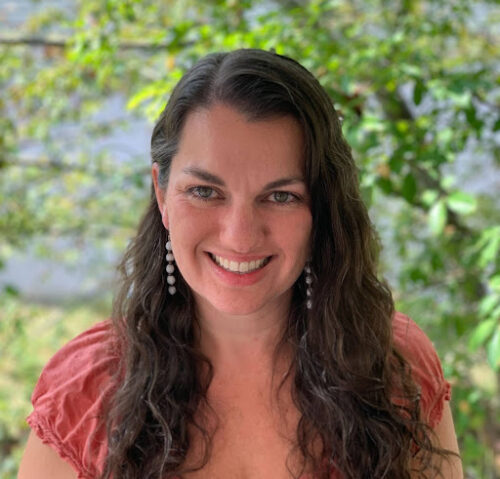
Christine Hartman Derr (WCYA ‘24)
ChristineHartmanDerr.com
Christine Hartman Derr is a citizen of the Cherokee Nation of Oklahoma. She’s a graduate from VCFA’s Writing for Children MFA program, where she won the Revisionary award, Candlewick Picture Book Prize, T.A. Barron Prize for Nature Writing, and was selected as a DEI Fellow and a Center for Arts and Social Justice Fellow. She is honored to have been a recipient of the WNDB Walter Grant for Native Creators. Her debut middle grade novel, The Witches of Bear Creek Falls, and her debut picture book, Until We Meet Again: Donadagohvi, are forthcoming from Heartdrum/HarperCollins Children’s. She’s honored to be a contributor to the anthology Legendary Fry Bread Drive-In, a Heartdrum 2025 release. She runs the blog Paw Prints in the Sink and has written articles for regional publications. Originally from Broken Arrow, Oklahoma, Christine lives in East Tennessee with her spouse, children, and a rambunctious crew of lovable pets with themed names.
